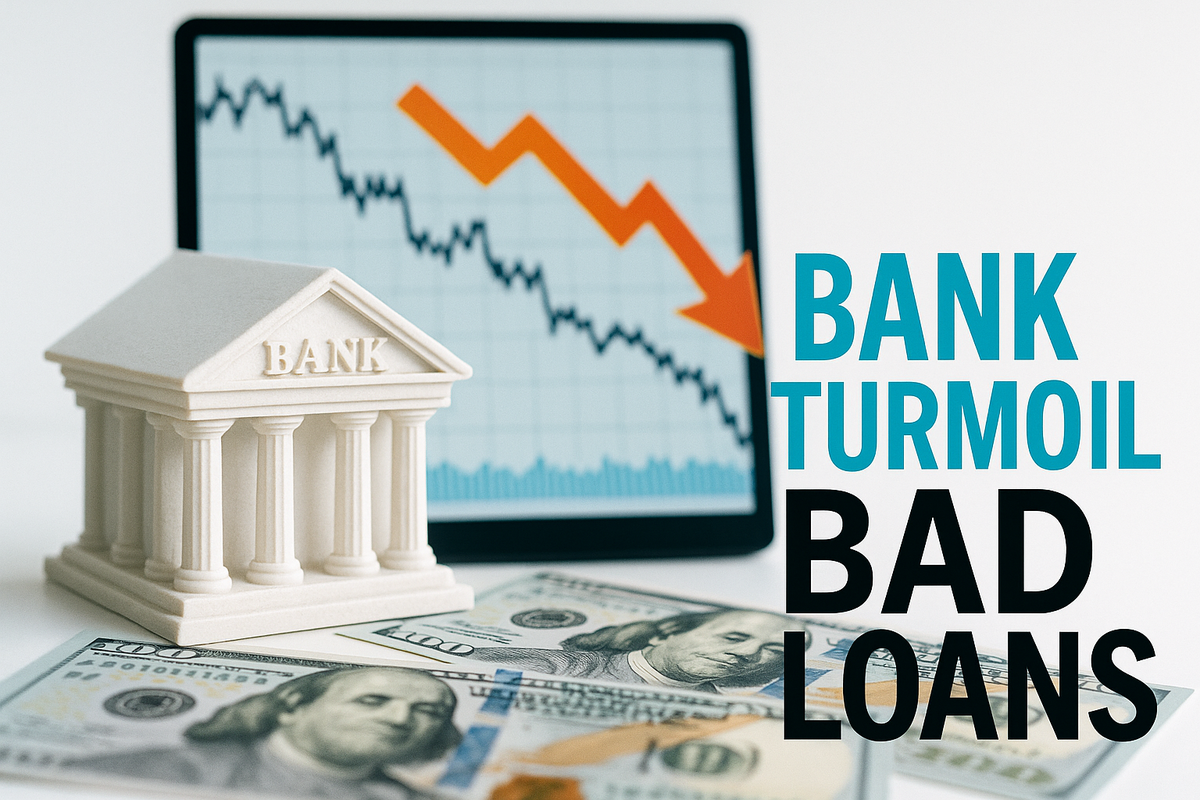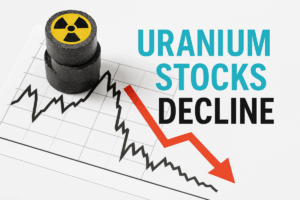The recent turmoil in the U.S. banking sector, marked by alarming reports of bad loans, has ignited widespread investor concern and led to significant declines in bank stock values. This situation, evolving since mid-October 2025, raises critical questions about the stability of financial institutions and the broader economic implications.

Table of Contents
Key Facts
The global economy is witnessing heightened volatility, particularly within the banking sector, as regional banks report substantial losses linked to bad loans.
U.S. regional banks such as Zions Bancorporation and Western Alliance have experienced sharp stock declines, with Zions down 13% and Western Alliance down 11% amid concerns over loan quality and potential fraud.
The Dow Jones Industrial Average fell by 0.65%, reflecting broader market apprehension, while major banks like JPMorgan Chase and Bank of America also reported stock price drops.
Recent bankruptcies of companies like First Brands and Tricolor Holdings, which had significant ties to these banks, have exacerbated fears of systemic issues within the financial sector.
Analysts have noted that the regional banking index dropped by 5.8%, indicating a growing lack of confidence in the stability of lending practices.
Analysis and Interpretation
The current situation underscores the fragility of the U.S. banking sector, particularly in light of the recent bankruptcies of First Brands and Tricolor Holdings. These failures have raised alarms about the quality of loans held by regional banks, with analysts warning that the repercussions could extend beyond isolated incidents.
The rapid decline in stock prices for banks like Zions and Western Alliance suggests a market reaction fueled by fear of potential widespread defaults. Jamie Dimon, CEO of JPMorgan, likened the situation to discovering a cockroach, indicating that underlying issues may be more prevalent than currently recognized.
The interconnectedness of financial institutions means that the fallout from these regional banks could lead to a broader economic downturn, especially if consumer confidence is shaken. As consumers become wary of financial stability, spending may decline, further impacting economic growth.
The Federal Reserve’s recent interest rate policies have also contributed to the precarious situation, as higher rates have led to significant losses on bond holdings for many banks, reminiscent of the 2008 financial crisis.
Market Impact
The ongoing turbulence in the banking sector has led to notable impacts across various asset classes. Equities have faced downward pressure, particularly in the financial sector, with stocks like Barclays and Standard Chartered also feeling the heat of investor caution.
The U.S. dollar has remained relatively stable against major currencies, signaling a cautious approach among investors as they await further developments in the banking sector.
Gold prices have surged, reaching record highs as investors seek safe-haven assets amidst the uncertainty, reflecting a shift in market sentiment toward risk aversion.
Bond markets have reacted with increased volatility, as yields on U.S. Treasuries fluctuate in response to changing investor expectations regarding future interest rate hikes and the overall economic outlook.
Scenarios
Base scenario: The banking sector stabilizes as institutions implement stronger risk management practices, leading to a gradual recovery in stock prices and a restoration of investor confidence.
Optimistic scenario: The Federal Reserve intervenes with targeted measures to support the banking sector, resulting in a swift resolution of current issues and a rebound in economic growth.
Pessimistic scenario: Continued defaults and a lack of transparency in lending practices lead to a broader financial crisis, prompting severe economic repercussions and prolonged market instability.
Conclusion
The recent developments in the U.S. banking sector underscore significant vulnerabilities, particularly regarding lending practices and credit quality. As stakeholders navigate this complex landscape, proactive measures will be essential to restore investor confidence and ensure financial stability.
- https://www.theguardian.com/business/2025/oct/17/global-stock-markets-fall-and-gold-hits-record-high-amid-jitters-over-us-banks
- https://www.boursorama.com/bourse/actualites/les-valeurs-bancaires-americaines-plongent-les-investisseurs-s-inquietent-des-risques-croissants-9ba5b58fa09b2c876b8917d204cd4e03
- https://www.cnbc.com/2025/10/17/bad-loans-by-regional-banks-should-concern-us-all.html
- https://www.finews.com/news/english-news/69777-usa-banken-faule-kredite-zions-western-alliance-2



